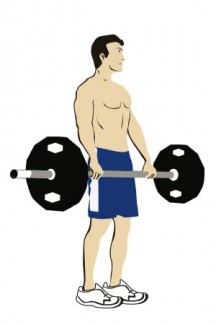
 License Type: Personal Use
License Type: Personal Use  File Size: 23,233 KB
File Size: 23,233 KB File Type: ZIP
File Type: ZIP
 SKU: 56414
SKU: 56414  Shipping: Online Download
Shipping: Online Download
Ebook Sample Content Preview:
Grapefruit
There’s good reason for this traditional diet food to be a regular part of your diet. It helps dissolve fat and cholesterol, according to Dr. James Cerd of the University of Florida. An average sized grapefruit has 74 calories, delivers a whopping 15 grams of pectin (the special fiber linked to lowering cholesterol and fat), is high in vitamin C and potassium and is free of fat and sodium.
It’s rich in natural galacturonic acid, which adds to its potency as a fat and cholesterol fighter. The additional benefit here is assistance in the battle against atherosclerosis (hardening of the arteries) and the development of heart disease. Try sprinkling it with cinnamon rather than sugar to take away some of the tart taste.
Mustard
Try the hot, spicy kind you find in Asian import stores, specialty shops and exotic groceries. Dr. Jaya Henry of Oxford Polytechnic Institute in England, found that the amount of hot mustard normally called for in Mexican, Indian and Asian recipes, about one teaspoon, temporarily speeds up the metabolism, just as caffeine and the drug ephedrine do.
“But mustard is natural and totally safe,” Henry says. “It can be used every day, and it really works. I was shocked to discover it can speed up the metabolism by as much as 20 to 25 percent for several hours.” This can result in the body burning an extra 45 calories for every 700 consumed, Dr. Henry says.
Peppers
Hot, spicy chili peppers fall into the same category as hot mustard, Henry says. He studied them under the same circumstances as the mustard and they worked just as well. A mere three grams of chili peppers were added to a meal consisting of 766 total calories. The peppers’ metabolism-raising properties worked like a charm, leading to what Henry calls a diet-induced thermic effect. It doesn’t take much to create the effect. Most salsa recipes call for four to eight chilies – that’s not a lot.
Peppers are astonishingly rich in vitamins A and C, abundant in calcium, phosphorus, iron and magnesium, high in fiber, free of fat, low in sodium and have just 24 calories per cup.
- File Size:23,233 KB
- License: Personal Use
- Category:Ebooks
- Tags:2015 Ebooks With Audio Personal Use







